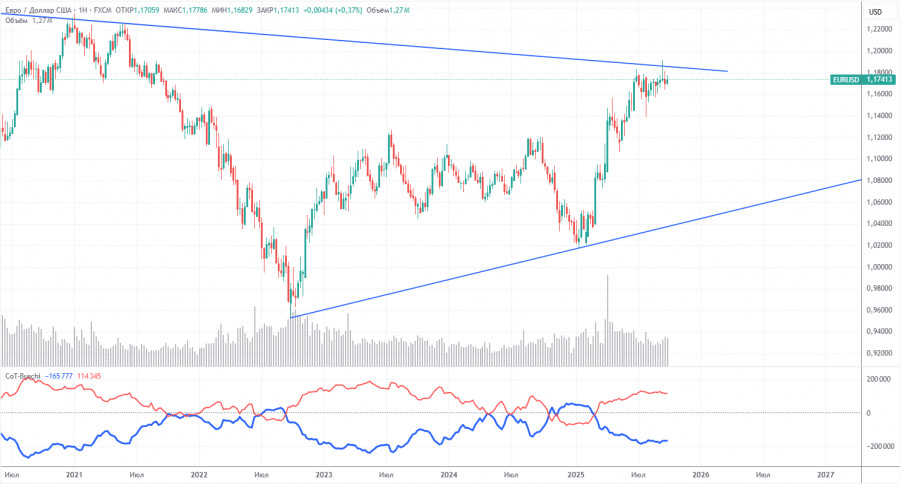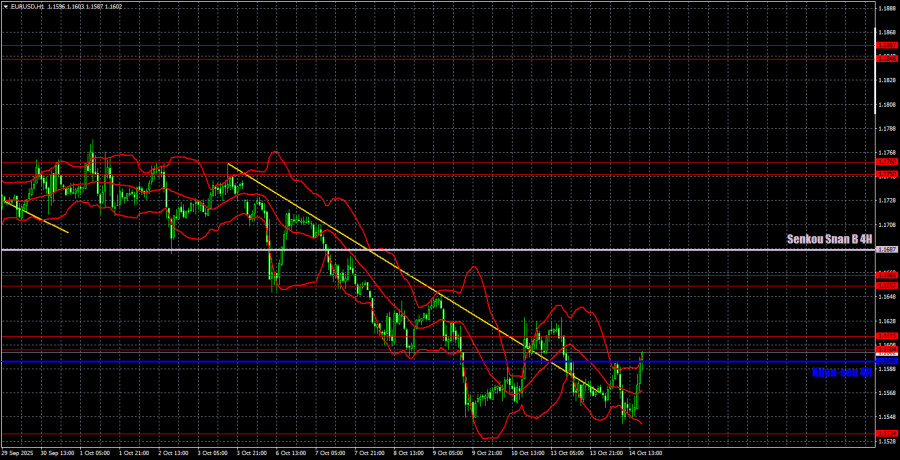Praha – Pražská burza po měsíci znovu zakončila obchodování nad 2100 body. Index PX dnes vzrostl o 1,99 procenta na 2103,61 bodu. Víc než šest procent přidaly akcie Erste Bank, o téměř 2,5 procenta si polepšily cenné papíry Komerční banky. Vyplývá to z internetových stránek burzy. Česká koruna dnes posílila k euru i dolaru.
The EUR/USD currency pair fluctuated throughout Tuesday. In the first half of the day, another decline was observed, potentially driven by weaker-than-expected ZEW economic sentiment indices from both Germany and the EU. In the second half of the day, the pair experienced a slight recovery, likely in response to remarks from Federal Reserve Chair Jerome Powell. It remains unclear what exactly Powell communicated to the markets, but in any case, the Fed is expected to maintain a generally dovish stance over the next one to two years. The only question is the pace at which the key interest rate will be lowered. Even the modest upward movement observed late Tuesday has not significantly changed the technical picture.
From a technical standpoint, the price has now broken through a second consecutive descending trendline, suggesting the start of a potential new uptrend. As a reminder, there are no strong medium-term reasons for the dollar to strengthen, and its recent gains seem questionable considering the fundamental and macroeconomic backdrop. The pair managed to breach the critical line yesterday, increasing the probability of continued upward movement.
On the 5-minute chart, no valid trading signals were formed during Tuesday's session. Only in the evening did the price reach the 1.1604–1.1615 zone and the Kijun-sen line, but it failed to consolidate above or rebound from these levels. As such, trade setups are likely to shift to Wednesday, though signals may also form overnight.

The latest Commitments of Traders (COT) report is dated September 23. As shown in the chart, the net position of non-commercial traders has mainly remained bullish. Bears barely gained the upper hand at the end of 2024 but quickly lost it. Since Donald Trump's return to the presidency, only the dollar has declined in value. While we cannot say with certainty that the U.S. currency will continue to fall, global developments suggest that this scenario may prevail.
There are still a few fundamental drivers supporting the euro, but many factors could still weaken the dollar. The global downtrend is still intact—though its relevance after 17 years of history is debatable. The dollar might resume strengthening once Trump ends all trade wars, but recent developments suggest the conflict will persist in some form. A potential loss of Fed independence is another powerful bearish factor for the U.S. currency.
The positioning of the red and blue lines continues to indicate that the bullish trend persists. During the most recent reporting week, the number of long positions held by the "non-commercial" group decreased by 800, while short positions rose by 2,600. Thus, the net position shrank by 3,400 contracts.

On the hourly timeframe, the EUR/USD pair may have completed its recent downtrend last week. The trendline has been broken, so now the euro needs to consolidate above both the Kijun-sen line and the 1.1604–1.1615 resistance zone. If this happens, we may expect an upward move toward the Senkou Span B line. From a technical standpoint, the euro is overdue for a climb.
For October 15, the following levels are relevant for trading: 1.1234, 1.1274, 1.1362, 1.1426, 1.1534, 1.1604–1.1615, 1.1657–1.1666, 1.1750–1.1760, 1.1846–1.1857, 1.1922, 1.1971–1.1988. Also note the Ichimoku indicator lines: Senkou Span B (1.1687) and Kijun-sen (1.1595). These lines are dynamic and may shift during the day, which should be considered when identifying trade signals. Don't forget to move the stop loss to break-even if the trade moves 15 pips in your favor—this helps minimize losses in the event of a false signal.
On Wednesday, the Eurozone will publish its industrial production report. While not insignificant, it is not considered a high-impact release. No major macroeconomic events are scheduled in the U.S., which is unsurprising given the ongoing government shutdown.
On Wednesday, traders can once again trade based on the 1.1604–1.1615 level area. A confirmed breakout above the Kijun-sen line and this resistance zone would validate long positions with a target at 1.1657–1.1666. If this does not occur, the pair is likely to resume its decline toward 1.1534.

فوری رابطے